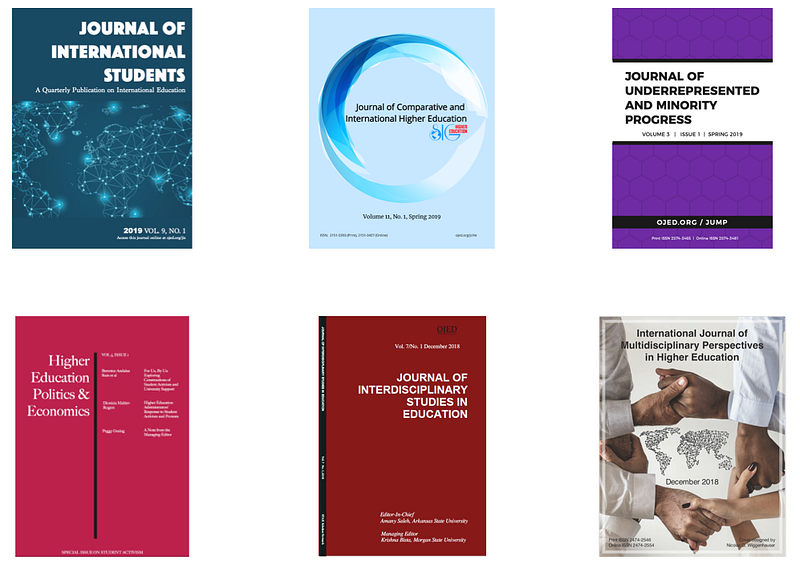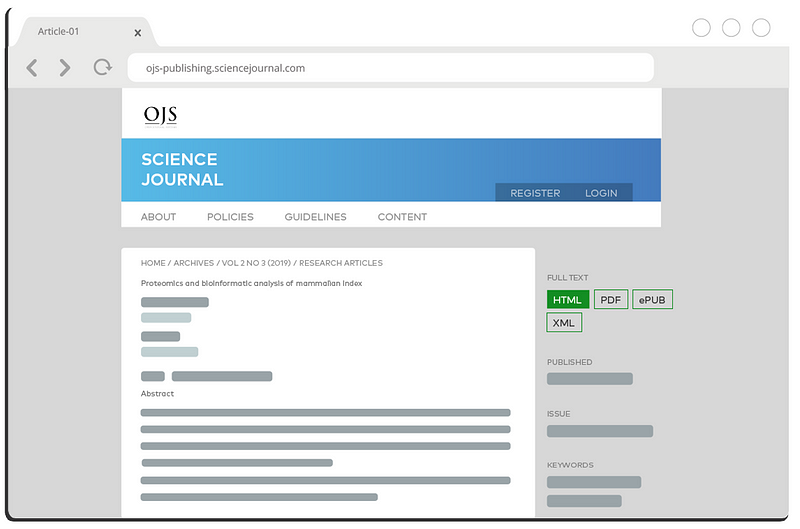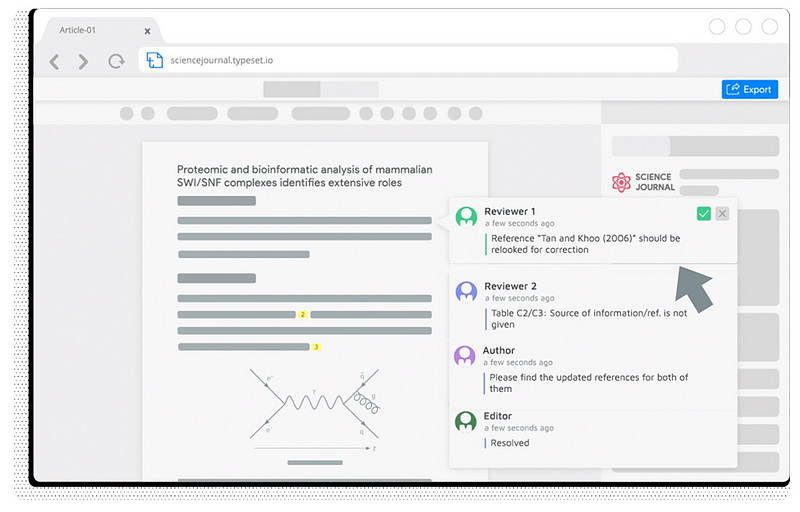How OJED Publishers Run Six Journals With Just One Volunteer Using SciSpace

The rapidly-changing digital publishing world has realized a growing need for journal production and publishing standardization. Structuring scholarly articles into an XML format compliant with JATS standards has become the new normal for journal publishers, editors, and researchers to expand and improve the readership experience. But, implementing a faster, more cost-effective system for XML-first production is easier said than done.
Dr. Christopher Glass, Chief Editor of Open Journals In Education (OJED), and his team were looking to simplify this production and typesetting process for their journals.
To give you more context, Open Journals in Education (OJED) is a publisher of six high-quality academic journals with a strong focus on quality research in the higher education field. Their editorial board comprises international scholars, researchers, and leaders in the education industry. Thanks to institutional sponsorship, individual authors are not charged for submissions.

All OJED journals are Gold Open Access, peer-reviewed, and indexed in reputable academic databases. However, this wasn’t always the case, not before their journal production and indexing workflow underwent a makeover.
Read on to know how OJED’s publishers and editorial team have streamlined their journal publishing with automated, pre-formatted JATS XML article generation using SciSpace (Formerly Typeset).
Standardization of Article Typesetting and Journal Templates
Being a volunteer-run organization, OJED got the most of their typesetting done by the authors using MS word templates. This posed a significant challenge as authors would submit unstandardized articles even after spending a lot of time in formatting. The typesetting quality varied a lot.

The production team spent two to four weeks editing, formatting, and re-formatting manuscripts in MS Word before publishing a journal issue. However, the quality of output still lacked consistency and professional typesetting.
OJED’s team wanted to build and launch a standardized design for their journal articles. With over 25 years of experience, the publishing team at SciSpace created a customized template most suited to their requirements.

The templates for OJED journals were available for use, and formatting articles became a walk in the park for both the editorial team and their authors with SciSpace’s research editing software. Standardization of their published papers also reduced production errors.
For the uninitiated, SciSpace is a platform for journal publishers to automate the typesetting workflow and increase journal visibility. Built exclusively for editing scholarly articles, SciSpace automatically converts and enhances author submissions, making their articles production-ready.
Richer indexing in scholarly index engines and databases has always been a challenge
The production editors at OJED were aware of the benefits of XML-first typesetting and academic search engine optimization (SEO). They wanted to incorporate these practices into their publishing process.
We all know that most web publishing systems use the Dublin Core schema to tag article metadata. On the contrary, Dublin Core is highly incompatible with Google and Google Scholar as they prefer HighWire Press and Schema.org as tagging standards. These standards support quality full-text XML generation of scholarly content.
Therefore, constructing a semantically-tagged article for richer indexing in Google and Google Scholar posed significant technical hurdles for OJED publishers. And, manually coding article metadata in JATS XML was a non-feasible, tedious, and costly process.
“We came across manuscript editing services and XML typesetting services, but they were either too expensive or too complicated or both. One vendor quoted us $10,000 per year for XML Typesetting!” — Dr. Glass said, explaining their efforts to address this challenge.
The JATS XML advantage with SciSpace
Fostering academic SEO for increased journal visibility and readership
OJED uses Open Journal Systems (OJS) for content management, including peer-reviews and article submissions. As part of the manuscript publication process, OJS requires publishers or authors to create galley files (e.g., XML, PDFs, HTML, etc.) from production-ready files once the articles move from submission to the production stage. These galley files are uploaded to publish articles online via OJS directly.
The editorial team used SciSpace to export journal articles in the form of OJS galleys that contained publication-ready PDF files.
The OJS Galleys also supports JATS XML article formats with rich metadata tagging, such as authors, sections, references, figures, journal details, and issue details for proper indexing in Google and Google Scholar.
OJED’s volunteer/editor has been leveraging SciSpace’s automated XML converter to convert research articles into machine-readable JATS XML files that are richly tagged and get indexed in search engines easily (i.e., they show up in online search results to relevant audiences). With this newfound online visibility, the journal’s readership and, consequently, its reputation and revenues have gone up.

An additional benefit of producing JATS XML-formatted articles is the ability to host manuscripts as a web page on OJS. There are several plugins in OJS’s plugin gallery that can take the output from SciSpace (JATS XML files) and transform it to an HTML that is compatible with the OJS environment. So, the SciSpace-generated JATS XML gets converted into an HTML display with one click, giving your journal articles their own place in the OJS-hosted site.
A 10X Faster Workflow with SciSpace
SciSpace’s editing software imports manuscripts written in MS Word and provides a simple user interface to edit and enhance articles.
The SaaS platform has integrated capabilities of:
- Auto-filling and tagging references
- Managing complex tables, equations, figures, footnotes, etc.
- Self-ordering citations and references
- Suggesting and tracking changes on articles online
- Performing spell checks and highlighting grammatical mistakes
- Plagiarism detection

The editorial team and the authors can now collaboratively make super fast revisions to the articles instead of doing it in MS Word files and email threads. They save over 80% of time and resources spent on production as SciSpace has completely automated the conversion workflow of author submissions and published articles.
95% Reduction in Typesetting Efforts
“Earlier, it used to take hours to make an article production-ready depending on the complexity of the article. Now, we can prepare them in around 15–20 minutes,” says Dr. Glass.
OJED now no longer needs to work with a large production team as a single associate editor can manage the typesetting and production workflow with SciSpace. SciSpace’s platform integration with OJS helps make the overall process seamless.
Earlier, the collaboration between the OJED’s editorial staff and authors used to take weeks when done on email threads. With SciSpace’s built-in online research collaboration and change-tracking system, making changes in articles post-acceptance has become hassle-free and more efficient.
XML-first Workflow and Increased Visibility of OJED Journals
Along with fully SciSpace PDFs, article-level JATS XMLs were made a central part of the production workflow. JATS XML, including structured tagging and ingestion of article-level metadata, improved rankings of articles in academic search engines like Google Scholar.
“With SciSpace, I can handle formatting for all journals with just one grad student instead of a team of copy editors. And the best part is that all collaboration happens online on the article instead of emails. The software is really easy to pick up, and the publishing support team has been very helpful in creating templates. If you want to run a journal efficiently. I would definitely recommend SciSpace.” — Dr. Christopher Glass. Senior Editor, OJED
OJED’s team has seen significant improvements in their journal production process with SciSpace. High-quality, indexable JATS XML articles drive the journal’s majority of readership from Google and Google Scholar. While we have completely automated their journal production, they are witnessing exponential growth in their journal visibility with academic SEO.
Download OJED’s full case study here.
SciSpace makes publishing workflows more efficient by facilitating collaboration. SciSpace publisher automates the conversion of author submissions to any format, including JATS XML.

By integrating SciSpace into your journal, you can get the opportunity to directly contribute to your publication, giving your publication greater visibility and a faster approval process.






